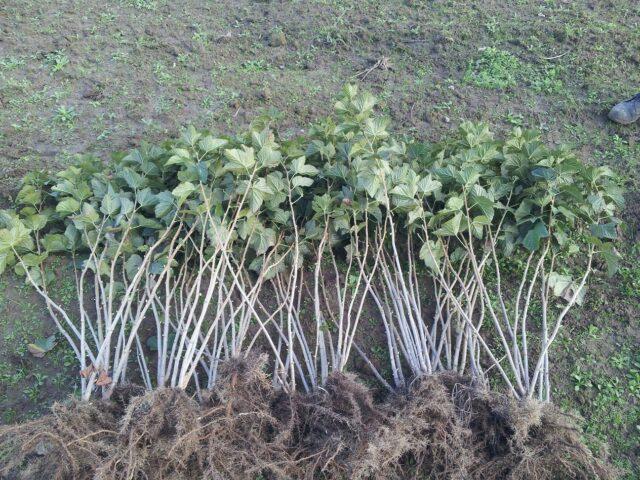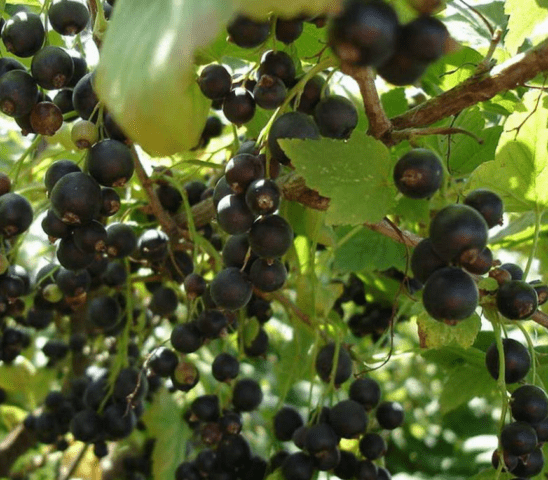Content
Shadrikh blackcurrant is a Russian variety, characterized by high winter hardiness, sweet and large berries. The culture is unpretentious and grows well in the climatic conditions of Western, Eastern Siberia and other regions. Care does not require much effort, so even novice gardeners can plant bushes.
History of selection
Black currant Shadrikha is a variety of Russian selection, obtained by A.I. Degtyareva, V.N. Skoropudov and A.A. Potapenko on the basis of the zonal gardening station (Novosibirsk). The varieties Bredtorp and Agrolesovskaya took part in the crossing.
The application for registration was submitted in 1992. The variety was included in the register of breeding achievements of the Russian Federation in 1997. Shadrikh currants were approved for cultivation in Western and Eastern Siberia.
Description of the blackcurrant variety Shadrikha
The bush is medium-sized (120–150 cm in height), moderately spreading. The shoots are of medium thickness, straight, strong, young branches are gray-green, the surface is matte, over time the bark becomes grayish.
Shadrikh blackcurrant leaves are five-lobed, large in size, dark green in color. The surface is shiny, wrinkled. The notches are small, the apex is blunt. The blade is bent, the lateral veins are located perpendicular to each other. The teeth are short and blunt. A medium-sized notch is noticeable at the base of the leaf. The basal lobes grow overlapping.
Main characteristics of Shadrikh currant berries:
- large size (weight from 1.6 to 4.3 g);
- black color;
- the surface is shiny;
- the skin is thick, durable;
- dry separation;
- the taste is balanced, sweet.
Chemical composition of the pulp:
- share of dry matter – 12.2%;
- total sugar – 9.9%;
- acids – no more than 0.8%;
- vitamin C content – 130 mg per 100 g;
- the amount of pectin substances is up to 2.2%.

The composition of Shadrikh currant berries is dominated by sugars, so the taste is pronounced sweetness
Characteristics
Shadrikh currants were bred specifically for the climatic conditions of Western and Eastern Siberia. The culture is resistant to unfavorable weather, tolerates frost well, and is unpretentious in care.
Drought resistance, winter hardiness
Shadrikh black currant has high winter hardiness: it can withstand up to -40 °C (zone 3).
In hot weather, it is recommended to give water at least once a week. This will ensure stable yields and good taste of the berries.
Pollination, flowering period and ripening time
Shadrikh blackcurrant is a self-fertile variety. It does not require the proximity of other specimens and pollinators (bees, butterflies and other insects). Medium ripening variety. Flowering begins in the second half of June. The main wave of fruiting occurs at the end of July and beginning of August.
Productivity and fruiting
The description of the Shadrikh blackcurrant variety indicates that from one bush you can collect an average of 2.5 kg, maximum 2.8 kg of delicious berries. In industrial cultivation, it is possible to harvest up to 9.3 tons of berries per hectare. Fruits of universal use - suitable for fresh consumption and in preparations:
- jam;
- jam;
- fruit drink;
- berries, ground with sugar or frozen.
Resistance to diseases and pests
Shadrikh blackcurrant is resistant to powdery mildew. But in unfavorable seasons, bushes can suffer from grouse, septoria and bud mites. Therefore, in April, a single treatment with fungicides should be carried out: “Quadris”, “Hom”, “Fundazol”, “Tattu”, “Fitosporin”, Bordeaux mixture.
Folk remedies work well against insects:
- infusion of wood ash with laundry soap, cloves and garlic;
- a decoction of marigolds, potato tops, yarrow greens;
- solution of baking soda, ammonia.
If necessary, Shadrikh blackcurrant bushes are recommended to be treated with insecticides - “Decis”, “Aktara”, “Karbofos”, “Konfidor”, “Vertimek”, “Fitoverm” and others.
After applying chemicals, you must wait a few days before harvesting.
Advantages and disadvantages
Shadrikh blackcurrant is one of the best varieties for Siberia. It tolerates even severe frosts well and does not require special care conditions. At the same time, it produces very sweet berries of 2.5–2.7 kg per bush.

Shadrikh's black currant does not require planting pollinators on the site
Pros:
- the fruits are large;
- the taste is sweet, pleasant;
- good keeping quality;
- transportability;
- resistance to powdery mildew;
- very high winter hardiness;
- fast ripening times.
Minuses:
- spreading bush;
- may suffer from septoria, kidney mites and hazel grouse.
Features of planting and care
Shadrikh blackcurrant seedlings are purchased from trusted suppliers. They should be 30–35 cm in height, with healthy roots and leaves (without any spots). It is advisable to plan planting for the end of September - beginning of October, but this can be done in the first ten days of April.
The soil for planting should be fertile and loose - preferably light loam with a neutral or slightly alkaline reaction (pH from 7.0 to 8.0). The location should be:
- completely open to sunlight;
- protected from the wind (for example, along a fence);
- without stagnation of moisture (preferably at a slight elevation).
In spring or summer, the site is dug up and 3–5 kg of compost or humus or 30–40 g of complex mineral fertilizer per 1 m2 are added. 500 g of sawdust or sand are embedded in clay soils. A month before planting, several holes are formed 50–60 cm deep at a distance of 1.5 m. A layer of small stones is placed at the bottom, and fertile soil is poured on top.

Shadrikh blackcurrant seedlings should be strong and healthy
Before planting, the bushes are kept for several hours in “Kornevin” or “Epin”, after which they are planted at an angle of 45 degrees, deepening the root collar by 5–8 cm. The earth is compacted a little, 2 buckets of settled water are poured out. For the winter, plantings are mulched with leaf litter, sawdust, hay or other material.
Caring for black currants of the Shadrikha variety is not very difficult. Basic Rules:
- Watering young seedlings regularly - a bucket 2 times a week. Adult bushes are given 20 liters twice a month. During drought, water weekly. In the heat of the evening, the crown must be sprinkled.
- Feeding is applied in the second year.Every spring they give urea - 20 g per bush. During the flowering period, complex fertilizer (30–40 g) is applied. At the same time, you can give boric acid - 3 g per 10 liters of water. During the formation of the berries, water with infusion of mullein or mown grass.
- Since the Shadrikh blackcurrant bushes are spreading, they must be tied to wooden supports.
- After heavy watering or rain, the soil is loosened.
- Weeds are removed as necessary. A layer of mulch - peat, dry grass, sawdust and other materials - will help drown them out.
- It is advisable to dig up young seedlings for the winter and cover them with burlap or spruce branches on top.
- Pruning is carried out every spring, removing all damaged and weakened branches. To form a healthy bush in the first years of life, you need to leave up to 15 strong shoots, and remove the remaining branches (in the fall).
- To protect the Shadrikh blackcurrant from rodents, in the spring a metal mesh is fixed around the trunk. You can also lay out sheets of rubber on the site. This smell repels moles.
Conclusion
Shadrikh blackcurrant is one of the most suitable varieties for Siberia. It ripens quite quickly, and the berries are not only large, but also sweet. The skin of the fruit is strong, which makes it possible to store them in the refrigerator for several weeks, as well as transport them over any distance.










